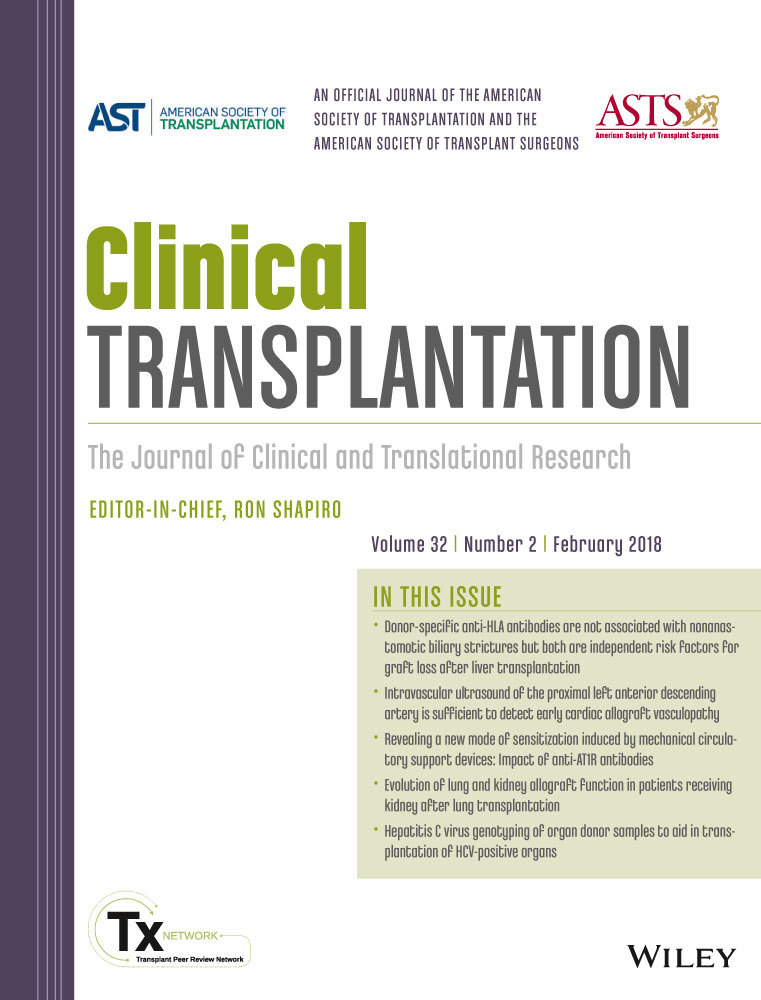Cholinesterase levels predict exercise capacity in cardiac recipients early after transplantation
Abstract
Purpose
Although cardiac rehabilitation is recommended for patients early after heart transplantation (HTx), adequate exercise effect cannot always be obtained, partly because in patients with chronic heart failure, exercise capacity is reduced due to malnutrition while waiting for HTx. This study aimed to investigate the relationships between exercise capacity and clinical variables, including nutritional indicators, early after HTx.
Patients and Methods
Forty-three HTx recipients were studied. The mean age at HTx was 38 ± 14 years, and 86% were male. We assessed the relationships between peak oxygen uptake (VO2) and clinical variables, including plasma B-type natriuretic peptide (BNP), isometric knee extensor muscle strength (KEMS), and nutritional indicators within 1 week of their respective discharges.
Results
Peak VO2 correlated positively with isometric KEMS (r = .63, P < .0001) and negatively with BNP level (r = −.37, P = .015). Of the nutritional indicators, only cholinesterase levels had a significant relationship with peak VO2 (r = .34, P = .028), whereas the Geriatric Nutritional Risk Index and the Controlling Nutritional Status scores did not. In multiple linear regression analysis, cholinesterase levels and isometric KEMS were independent predictors of peak VO2.
Conclusion
Cholinesterase levels predicted exercise capacity early after HTx.




